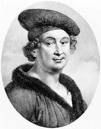

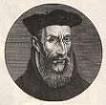


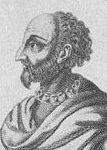

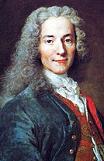
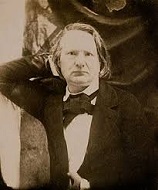






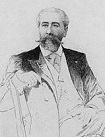
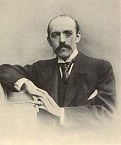
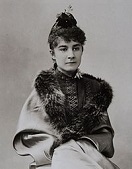


















TLW's French Poet Historyscope |
By T.L. Winslow (TLW), the Historyscoper™ |
© Copyright by T.L. Winslow. All Rights Reserved. |
Original Pub. Date: Aug. 26, 2015. Last Update:: Sept. 30, 2018. |


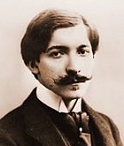



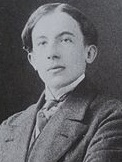



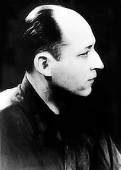


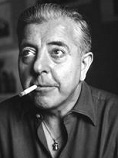
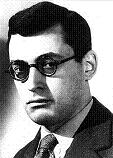

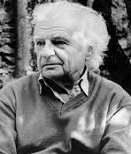

Westerners are not only known as history ignoramuses, but double dumbass history ignoramuses when it comes to French poetry and French poet history. Since I'm the one-and-only Historyscoper (tm), let me quickly bring you up to speed before you dive into my Master Historyscope.
In the 8th cent. Old French (OF) AKA langue d'oil evolves in N France from Latin, Gaelic, and German, transitioning to Middle French in the mid-14th cent.; meanwhile the Occitan language (langue d'oc) develops in S France in the 8th cent.
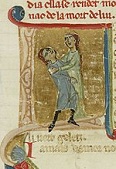
About 1147 French troubador Jaufre Rudel, Prince of Blaye dies during the Second Crusade after pioneering the theme of "love from afar" (amor de lonh/loin), causing a legend to arise that he was in you know what kind of love with Countess Hodiema (Hodierna) of Tripoli (Jerusalem) (1110-64) (daughter of Baldwin II of Jerusalem), and died in her arms.
About 1150 Trouvere music in Provence, S France becomes organized; Jongleurs (wandering minstrels) popularize Fabliaux (Fablieaux), short (less than 400 lines) bawdy comic tales in octo-syllabic verse (ancestor of the modern short story), while romantic knight types prefer the sack in the hay, er, Breton Lay. Late in the 12th cent. French begin dropping final consonants.


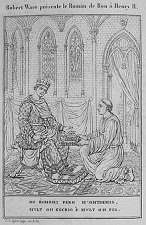
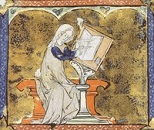
Under my thumb, the bishop who won't let me down? On Apr. 18, 1161 Canterbury archbishop (since 1139) Theobald of Bec (b. 1090) dies, and Henry II designates his trustworthy Norman lord chancellor (secy. of state) (since 1155) (St.) Thomas Becket (1118-70) (a secular man who stepped down as archdeacon of Canterbury to become Henry II's chancellor, becoming known for high living along with charity to the poor, leading 700 knights in battle and engaging in single combat, once arriving on a mission in Paris with 40 horses, eight chariots, and 200 atendants, also enjoying womanly pleasures with his boss, and enforcing a land tax on both landowners and churches and bishoprics) as his successor, and he assumes office next year; too bad, it backfires when he unexpectedly flops and supports the ecclesiastical cause instead of being under his thumb as Lanfranc had been with William I, donning a hair shirt and living in poverty, eating only veggies, and washing the feet of 13 beggars each night; meanwhile Henry's court becomes the home of writer Walter Map (1140-1209), Norman poet Robert Wace (1100-74), Marie de France (first female French poet) (author of 12 lais, medieval poems of knighthood, varying from 100-12K lines), natural philosopher (first English scientist?) Adelard of Bath (1080-1152), and philosopher-historian-diplomat John of Salisbury (Johannes Parvus) (John the Little) (1120-80), bishop of Chartres in 1176-80.
About 1180 French romantic poet (first known trouvere (trouvère) (trouveur)) Chretien (Chrétien) Troyes (1144-90) writes Lancelot, the Knight of the Cart, the first story to feature Sir Lancelot as a main char., telling the story of the abduction of Queen Guinevere and her love affair with him, pioneering the concept of courtly love; it was completed by another writer, and Chretien hated its featuring of courtly love?; he also writes Yvain, the Knight of the Lion, an Arthurian romance about a knight who is rejected by his lady for breaking a promise and performs a number of heroic deeds to retain her favor. He leaves Perceval, the Story of the Grail (Perceval, le Conte du Graal) (Fr. "pure fool"), which popularizes the Quest of the Holy Grail, and is continued by other writers.



On Oct. 9, 1191 Richard I Lionheart returns from the Crusades, but suffers from seasickness and decides to cross the Alps disguised as a Knight Templar; too bad, he is captured on Dec. 11 at an inn near Vienna by his enemy Duke Leopold V of Austria (1157-94), then imprisoned (in violation of an unwritten law that Crusaders can't be detained) by orders of grudge-bearing HRE Henry VI in a dark castle in Durnstein (Durrenstein) on the Danube River on Dec. 21 (until Feb. 4, 1194); after his return to France Philip II Augustus begins scheming with Richard's brother John Lackland, getting Normandy handed over by secret treaty; Philip II tries to get Richard I handed over to him as his prisoner, but is refused. In 1193 Hubert Walter becomes archbishop of Canterbury, then justiciar in 1194-8, ruling England in Richard I Lionheart's absence while keeping Prince John in check; Richard I is handed over to HRE Henry VI, who imprisons him in a secret location, demanding a huge ransom of 150K marks, double the annual revenue of the English crown; Richard I's mother and regent Eleanor of Aquitaine and her justiciar Hubert Walter attempt to raise his ransom by taxation of his English subjects, while Philip II violates his pledge and attacks and seizes English possessions in France, and both he and King John try to outbid them to keep him in captivity; Richard I writes a ballad while imprisoned, appealing to his countrymen to pay the ransom; William I of Scotland opposes John's attempts to seize power, and contributes 2K marks to Richard's ransom; meanwhile after much searching, Richard is found in Durnstein by his traveling minstrel Blondel de Nesle (1155-1202), who hears his master's voice singing along with a minstrel from the dungeon, then returns to England and reports it; the ransom money is used to build walls around Vienna - all right, you're not the person you were before you got rheumatic arthritis?
On Dec. 5, 1200 (St. Nicholas' Day) French poet Jean Bodel (1167-1210) debuts his miracle play Jeu de St.-Nicholas (The Game of St. Nicholas) in Arras, becoming the first known miracle play in France, in which St. Nicholas appears to robbers and persuades them to give their loot back; he dies of leprosy in Arras in 1210, leaving La Chanson des Saisnes (Song of the Saxons), about Charlemagne's war with the Saxons and their king Widukind (Guiteclin).
In 1210-50 (1230-70?) Old French trouvere Colin Muset from Lorraine flourishes in Champagne.
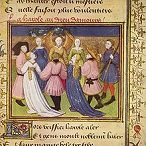

About 1230 French poet Guillaume de Loris (1200-40) composes the 4,058-line romantic courtly love poem Roman de la Rose (The Romance of the Rose), about the attempts of a courtier to woo his beloved in a walled garden (locus amoenus); in 1275 French poet Jean de Meun (Meung) (Jean Clopinel or Chopinel) (1240-1305) composes 17,724 more lines; it becomes the most-read book in Europe through the 15th cent. after Chaucer translates it into English in the late 14th cent.
In 1245-85 French trouvere Rutebeuf (Rustebuef) ("rude boeuf" = coarse ox, "rude oeuvre" = rustic piece of work) flourishes in Paris.
In the late 13th cent. the Rondeaux form of poetry originates in France, becoming one of the three formes fixes of French verse along with the Ballade and the Virelai, going on to be used until the 15th cent.; a virelai with only one stanza is called a Bergerette.
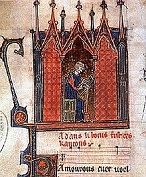
In 1283 Arras-born French trouvere-poet-musician Adam de la Halle le Bossu d'Arras (the Hunchback of Arras) (1245-88) writes Le Jeu de Robin et Marion, becoming the first French secular play with music; he leaves chanson, jeux-partis, polyphonic rondeaux, and motets.
In the 14th cent. the Rondel verse form originates in France, spreading to England and Romania, a variation of the rondeau consisting of two quatrains followed by a quintet (13 lines total) or sestet (14 lines total), of the form ABba abAB abbA(B).
In 1323 14 poets (7 men, 7 women) in Toulouse, France adopt the name La Pleiade (Pléiade).

In 1377 French #1 poet-composer Guillaume de Machaut (Machault) (1300-77) dies after combining trouvere forms, polyphonic techniques developed during the Gothic period, and troubadour music, causing the musicians of the papal chapel in Avignon to return to Rome and make it into the center of Euro music; he leaves 400 poems incl. 235 ballades, 76 rondeaux, 39 virelais, 24 lais, 10 complaines, and 7 chansons royales, making a fan of Geoffrey Chaucer.






On Aug. 11, 1415 English king (since Mar. 21, 1413) Henry V of England (1386-1422), with the tacit approval of John the Fearless of Burgundy, and hoping to take advantage of French anarchy reasserts his claims to the French throne, sails from Portsmouth with 10K men, and lays seige to Harfleur, rekindling the Hundred Years War (1337-1453); his brother John of Lancaster, 1st Duke of Bedford (1389-1435) is made lt. of England during his absence; after going up the coast of Normandy (Fecamp, Arques), Henry V goes E into Picardy to Amiens and Peronne, then swings N into Artois, heading for Calais; on Oct. 25 (St. Crispin's Feast Day) (Fri.) with the help of his 6K longbowmen Henry V and his "band of brothers" (Shakespeare) repeats the lesson of Crecy (1346) and wins big against the 30K-man French army hampered by their clunky knights (easy archery targets?) under Charles of Valois, Duke of Orleans (Orléans) (1394-1465) (future mad king Charles VI) and Charles d'Albret (-1415) (constable of France since 1413) at the 4-hour Battle of Agincourt near Arras in Flanders 50 mi. S of Calais (in an area with heavy clay-laced mud), destroying the flower of French knighthood (7K French vs. 100 English KIA?); immortalized in Shakespeare's Henry the V; Duke Charles of Orleans is captured after being discovered under a pile of corpses, incapacitated by his own heavy armor, and is taken to England where he is moved from castle to castle for 24 years with ransom prohibited by Henry V, passing his time by hunting and writing poetry in the ballade and rondeau forms in both French and English incl. Is she not passing fair? (later set to music by Edward Elgar) and "En la foret de longue attente", resulting in 2 vols. of poetry after his 1440 release; the actual battle figures were way more even than the English later claimed?; Charles VII's favorite Georges de la Tremoille (Trémoille) (1382-1446) is captured then soon released, going on to become a main opponent of Joan of Arc and become a royal favorite and grand chamberlain in 1427; the English reconquer Normandy (until 1449), undoing the work of Philip Augustus; Henry V is welcomed at Blackheath; Armagnac leader (constable of France) Bernard VII, Count of Armagnac (1360-1418) becomes virtual ruler of France.
In 1440-2 Normandy-born French poet Martin le Franc (1410-61) composes the 24K-line poem Le Champion des Dames (The Champion of Woman), dedicated to Philip the Good, praising historical women incl. Joan of Arc while attacking govt. corruption and aristocratic hedonistic luxury; illuminated by Peronet Lamy; printed in Lyon in 1485 and Paris in 1530; incl. "The Trial of Womankind", "The Conception of Mary". In 1447-8 he composes the long poem L'Estrif de Fortune et Vertu, a debate between Fortune and Virtue.
In 1460-1520 the Grands Rhetoriqueurs (Rhétoriqueurs) group of poets flourish in N France, Flanders, and the duchy of Burgundy, combining stilted language with the allegorical manner of the 15th cent. and the most complicated artificial forms of the ballade and rondeau, producing ostentatious poetry with extremely rich rhyme schemes that experiments with assonance and puns, alternation between masculine and feminine thymes (ending in a mute 'e'), and typography and graphic use of letters incl. verbal rebuses; leaders incl. Georges Chastellain (1415-74), Jean Molinet (1435-1507), Jean Marot (Jehan Desmaretz) (1463-1526), Jean Meschinot (1420-91), Jean Robertet, Guillaume Cretin (Crétin) (1460-1525), Jean Lemaire de Belges (1473-1525), Jean Bouchet (1476-1555), Andre (André) de La Vigne, Octavien de Saint-Gelais (1468-1502), Jean d'Auton, and Pierre Gringore (1475-1538).

In 1461-2 Paris-born Francois Villon (1431-63) pub. his masterpiece Le Grand Testament; 173 stanzas, incl. a bunch of rondeaux.



On Jan. 1, 1515 king (since 1498) Louis XII (b. 1462) dies, and Francis (Francois) I (1494-1547), son of his first cousin Charles d'Angouleme (1459-96) becomes French Valois king #9, the first French Renaissance monarch, and "the father of France's devotion to culture"; his favorite residence is the Palace of Fontainebleau 35 mi. SE of Paris on 200 acres in the 42K-acre Fontainebleau Forest, where he assembles the Fontainebleau School in the 1530s to decorate it; his well-educated brain babe sister Marguerite d'Angouleme (1492-1549) sets up a salon that becomes known as the "New Parnassus", fostering Francois Rabelais (1494-1553), Clement Marot (1496-1544), Pierre de Ronsard (1524-85) et al; Francis I signs an alliance with 15-y.-o. Archduke Charles of Hapsburg (Austria) (1500-58) (future HRE Charles V), who becomes gov. of the 17 provinces of the Netherlands; on Mar. 24 Francis I makes his friend and cousin Count Charles III de Montpensier and de Bourbon, Duke of Chatellerault (1490-1527) the (youngest ever?) constable of France (until 1523); Francis I hires German Landsknecht mercenaries,and makes a brilliant crossing of the supposedly impassable Alps, followed by a brilliant military V on Sept. 13-14 over the Swiss and Venetians at the Battle of Marignano, where the superiority of artillery and cavalry over the supposedly superior Swiss infantry tactics is proven, then a few days later defeats Swiss mercenaries and seizes the Italian duchy of Milan, becoming its gov. (until 1519); after conquering Lombardy, the French make peace with the Swiss on Nov. 12 and with Pope Leo X on Dec. 14; the Swiss retain most of the Alpine passes plus a French subsidy in return for the right of the French to enlist mercenaries; Francis I becomes the first French king to appoint port-chaise-d'affaires (royal porta-potty attendants). Too bad, in 1545 Francis I authorizes the first official persecution of the Protestant Huguenots.


In 1531 after starting out as a grand rhetoriqueur (rhétoriqueur), Cahors-born French Renaissance poet Clement (Clément) Marot (1496-1544), son of grand rhetoriquer Jean Marot (Jehan Desmaretz) (1463-1526) (official poet of Louis XII and Francis I) pub. his first book of poetry L'Adolescence Clementine (Clémentine), which makes him a star. In 1541 he and John Calvin's Vezelay, Burgundy-born disciple Theodore Beza (1519-1605) pub. Trente Psaumes, a trans. of the Psalms, which becomes wildly popular and advances the cause of the Reformation after being adopted by John Calvin; too bad, it is condemned by the Sorbonne, making it more popular? He goes on to promote the Blason, a poet that praises a woman by singing out different body parts and using creative metaphors to compare them with. After fleeing to Geneva then Piedmont, he dies in Turin on Sept. 12, 1544.
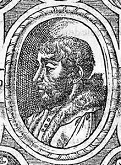
In 1536 Lyon-born French poet Maurice Sceve (Scève) (1501-64) pub. his first poems, a pair of blasons, "Le Sourcil" (The Eyebrow) and "La Larme" (The Tear) submitted to a contest organized by Clement Marot (in exile in Ferrara, Italy) to respond to his "Le Blason du Beau Tetin (Tétin)", making him a star in France and Italy, followedin 1539 with the blasons "Le Front", "La Gorge", and "Le Soupir", going on to found the Lyonnaise School of Poetry after becoming a fan of Antoine Heroet's "La Parfaict Amye" (1542) that elaborates the theory of spiritual love; he goes on to pub. the elegy Arion (1536), the blazons Delie (Délie), objet de plus haulte vertu (1544) (about his mistress Delie, really l'Idee?) (first French poetry collection modeled after Petrarch's "Canzoniere"), the eclogue La Saulsaye (1547), and the encyclopedic poem Microcosme (1562), making fans of Du Bellay, Ronsard, de Tyard, and Des Autels; his hot babe Pernette Du Guillet (1520-45) is his poetic music inspiring Delie, going on to become a poet too; members of the Lyonnaise School of Poetry incl. Claude de Taillemont, Jeanne Gallarde, Pernette du Guillet (1520-45), Louise Labe (Labé) (1524-66), Clemence (Clémence) de Bourges, and Sceve's sisters Claudine and Sybille.
In 1542 Paris-born French poet Antoine Heroet (La Maison-Neuve) (-1568) of Lyons pub. La Parfaicte Amye, which develops the idea of purely spiritual love based on the Italian Neo-Platonists, causing a firestorm of controversy, after which he takes holy orders and rises to bishop of Digue.



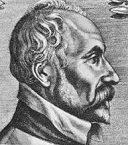
About 1550 La Pleiade (Pléiade) (named after the 3rd cent. B.C.E. Alexandrian Pleiad) (AKA the Brigade), a group of French Renaissance poets flourishes at the College de Coqueret, led by "Prince of Poets" Pierre de Ronsard (1524-85) (court poet of Charles IX), Joachim du (Du) Bellay (1522-60), and Jean-Antoine de Baif (Baïf) (1532-89), attempting to break with Clement Marot and the grands rhetoriquers and ennoble French by imitating the ancients to make it a worthy language for lit. expression; they are all students of Hellenist Latinist scholar-poet Jean Dorat (Daurat) (Joan Dinemandy) (1508-88); Bissy-sur-Fley, Burgundy-born poet-priest Pontus de Tyard (Thyard) (Thiard) (1521-1605), whose debut work Erreurs amoureuses is pub. in 1549 (first sonnets in the French language, introducing the Provencal sestina) is the last surviving member.

On May 4, 1555 Saint-Remy-de-Provence-born French physician-poet-seer Nostradamus (Michel de Nostredame) (1503-66) pub. Les Propheties (The Prophecies), a collection of three Centuries and 53 quatrains, becoming the rage at the French court; in 1568 the 4th ed. is posth. pub., containing 10 Centuries of 100 quatrains each, with quatrains 55-100 of Century 7 missing; by 1643 26 genuine and four forged eds. are pub.; the first English ed. is printed in 1672; they go on to become a hit with believers in prophecies, who use them to predict the future or justify a past event.
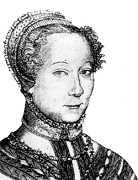
In 1555 after learning foreign languages in a convent school and dressing in male clothing and fighting as a mounted knight for the dauphin (Henry) at the Siege of Perpignan, and participating in tournament jousts in Lyon in honor of Henry II's visit, becoming known as "la belle Amazone", Lyon-born French humanist-feminist poet Louise Labe (Labé) (1524-66), AKA La Belle Cordiere (The Beautiful Ropemaker) for being the daughter of a wealthy you-know-what pub. Oeuvres, which incl. 24 poems in her honor by Maurice Sceve, Pontus de Tyard, Clement Marot, Jean-Antoine de Baif et al. comparing her to Sappho and proclaiming her the Tenth Muse, although her enemies incl. Jean Calvin claim she is a courtesan and/or whore.
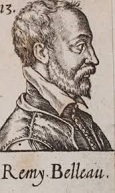
In 1556 French Renaissance La Pleiade poet Remy (Rémy) (Rémi) Belleau (1528-77) (friend of Pierre de Ronsard) pub. his first poetry book Les Petites Inventions, inspired by ancient Greek lyric poet Anacreon and launching his style of paradoxical poems of praise for simple things incl. butterflies, cherries, coral, oysters, shadows, and turtles. In 1565-72 he pub. La Bergerie, a mixed verse-prose work modeled on Jacopo Sannazaro's "Arcadia" (1544). In 1576 he pub. his last poetry book Les Amours et nouveaux Eschanges des Pierres precieuses, poems of praise about precious stones. He he goes on to become a sleeper hit in the 20th cent. with French poets incl. Francis Ponge.
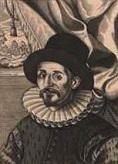
In 1574 Monfort-born Gascon Huguenot courtier-poet Guillaume de Salluste, Sieur Du Bartas (1544-90) pub. his first divine poetry book La muse chrestienne, followed by La Sepmaine; ou, Creation du monde (The First Week, or, the Creation of the World (1578), a hexameter epic based on the Seven Days of Creation in Genesis, which is a hit, going through 42 eds. by 1632, getting widely translated and becoming the basis of Milton's "Paradise Lost", making him France's #1 poet of the late 16th cent., and a hit in England and Scotland after James VI becomes a fan; he follows with a 2nd part "La Seconde Sepmaine" (1584), which is left unfinished at his death, and completed in 1603; he follows with L'Uranie (1584) and Judit (1584).



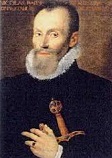

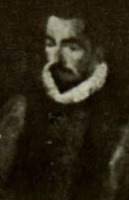
In 1594 French poets Nicolas Rapin (1535-1608), Jean Passerat (1534-1602), Florent Chrestien (1541-96), and Pierre Pithou (1539-96) pub. Satyre Menippee (Ménippée) de la Vertu du Catholicon d'Espagne, et de la Tenue des Estates de Paris in Tours, a satirical political work in prose and verse written during the Etats Generaux convened by Charles of Lorraine, Duke of Mayenne (1554-1611) (AKA Charles de Guise) (leader of the Catholic League) on Feb. 10, 1593 in Paris in hopes of electing himself to the French throne in place of pretender "Good King" Henry IV (1553-1610) (former Henry III of Navarre) (who renounced Protestantism for Roman Catholicism on July 25, 1593, allegedly uttering the immortal soundbyte "Paris is well worth a Mass"), criticizing the excesses of the Catholic League and Spain during the French Wars of Religion (Mar. 1562-Apr. 1598), championing Henry IV and defending the idea of an independent Roman Catholic France that makes a political accomodation with the Huguenots, damaging the Catholic League's cause and helping Henry IV win in 1596.

In 1600 Le-Locheur (near Caen, Normandie)-born French poet-critic Francois de Malherbe (1555-1628) presents his first poem to Maria de 'Medici, getting him an introduction to Henry IV by Cardinal Du Perron in 1605, who grants him a pension but leaves it to his successor to pay it, lucking out and inheriting his father's fortune in 1606, going on to develop the poetic rules of Classicism that dominate French poetry until the age of the Romantics.

In 1606 French poet Jean Passerat (1534-1602) posth. pub. Villanelle, which begins: "J'ay perdu ma Tourterelle", launching a new poetic form with 19 lines consisting of five tercets followed by a quatrain; the most famous is Dylan Thomas' "Do not go gentle into that good night" (1951).

In 1616 French Huguenot poet-soldier Theodore Agrippa d'Aubigne (Théodore-Agrippa d'Aubigné) (1552-1630) pub. his masterpiece epic poem Les Tragiques along with Histoire universelle (1616-18) before fleeing Marie de' Medici and her Counter-Reformation for Geneva.


In 1643 after becoming crippled in 1638, Paris-born poet-dramatist-novelist Paul Scarron (1610-60) pub. Recueil de quelques vers burlesques (A Collection of Some Burlesque Verses), followed in 1644 by Typhon ou la gigantomachie, going on to write comedies and pioneer the Roman comique (comic novel) in 1651. In 1652 he marries Francoise d'Aubigne (d'Aubigné) (1635-1719), who goes on to become Louis XIV's 2nd wife Madame de Maintenon.

On May 26, 1648 French poet-writer Vincent Voiture (1597-1648) dies without pub. anything, but his verses and prose letters are pub. posth. by his nephew, making a big influence in lit. circles, helping Francoise de Malherbe reform French verse and Jean de Balzac reform French prose.
In 1672 French writer and royal historian Jean Donneau de Vise (Visé) (1638-1710) founds Mercure Galant, a journal for light reading in Paris associated with the Moderns, which changes its name in 1724 to Mercure de France and becomes a leading intellectual and lit. review; it is suppressed by Napoleon in 1811-15, and ceases pub. in 1825 until 1890, when it is revived as a lit. review and pub. house for the Symbolist movement (until ?).
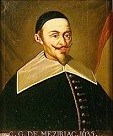
On July 11, 1731 Vienne, Isere-born diplomat-poet Jean-Francois Leriget de La Faye (1674-1731) dies in Paris after pub. his 1-hit wonder Ode to Worms.

On May 30, 1778 Paris-born anticlerical French Enlightenment superbrain writer-poet-historian-philosopher Voltaire (Francos-Marie Arouet) (1694-1778) dies in Paris, leaving a giant body of work of 20K books and 20K letters, incl. the epic poem La Henriade (1723) (homage to Henry IV of France) and the unfinished satirical poem The Maid of Orleans.

In 1820 Macon, Burgundy-born French poet-writer-politician (first French Romantic poet?) Alphonse Marie Louis de Prat de Lamartine, Knight of Pratz (1790-1869) pub. Meditations Poetiques (Poetic Meditations); incl. Le Lac (The Lake), about Lac du Bourget, becoming a hit and making him a star; he follows with Nouvelles Meditations (Méditations) (New Meditations) (1823), and Recueillements poétiques (Poetic Recollections) (1839).

In 1820 before resigning from the military in 1827 (since 1814), Loches-born French Romantic poet-novelist Alfred Victor, Comte de Vigny (1797-1863), friend of Victor Hugo pub. his first poem Le Bal (The Prom), followed by Poemes (Poèmes) (1822), Eloa (Éloa), ou La soeur des anges (Eloa, or the Sister of the Angels) (1824), about the attempted redemption of Satan by an innocent angel, and Poemes (Poèmes) antiques et modernes (Jan. 1826). In 1832 he pub. Stello, a philosophical dialogue between Dr. Noir (the Black Doctor) and Stello that examines the relation of poetry to society and concludes that the poet is doomed to be regarded with suspicion in every social order and must "separate poetic life from political life".

In 1822 Besancon-born Romantic French poet-novelist-dramatist Victor Marie Hugo (1802-85) pub. his first book of poetry Odes et poesies (poésies), followed by Odes et Ballades (6 vols.) (1828). In 1856 he pub. his poetry book Les Contemplations (6 vols.), containing poems written in 1830-1855, experimenting with autobio. in verse; dedicated to his daughter Leopoldine (1824-43), who drowned in the Seine River. On Sept. 26, 1859 he pub. La Legende des siecles (La Légende des siècles) (The Legend of the Ages) (2 vols.), depicting the "wall of the centuries" and the long procession of humanity, becoming known as the only true French epic; it is followed by the 2nd series (2 vols.) on Feb. 26, 1877, and the 3rd series (1 vol.) on June 9, 1883; "This is history, eavesdropped upon at the door of legend."


In 1830 Tarbes-born French poet-novelist-dramatist-journalist and art-lit. critic Pierre Jules Theophile (Théophile) Gautier (1811-72) pub. his debut poetry book Poesies (Poésies), which is withdrawn because of the July Rev., then reissued in 1832 under the name "Albertus", and again in 1845; in 1833 he pub. Les Jeunes-France (Young France: Tales Told with Tongue in Cheek), a satire or Romanticism, followed by La Comedie (Comédie) la Mort (1838), Espana (España) (1845), Emaux det Camees (Émaux et Camées) (Enamels and Cameos) (1852) (his masterpiece?), and Dernieres Poesies (Dernières Poésies) (1872); later he is claimed by Parnassianism, Symbolism, Decadence, and Modernism, making fans of Honore de Balzac, Charles Baudelaire, the Goncourt Brothers, Gustave Flaubert, Ezra Pound, T.S. Eliot, Henry James, Marcel Proust, and Oscar Wilde.

In 1855 after her Asian philologist hubby Paul Ackermann dies and she moves in with her sister in Nice, Paris-born French poet Louise-Victorine Ackermann (nee Choquet) (1813-90) pub. her first poetry book Contes en verse, followed by Contes et poesies (poésies) (1862), and Poesies, premieres poesies, posies philosophiques (Poésies, premières poésies, poésies philosophiques) (1874) which gains good reviews from critics, after which she gives up poetry to live as a recluse in Paris.

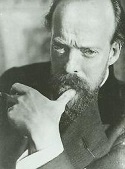
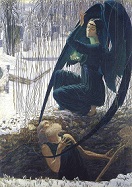
In 1857 Paris-born French poet-critic Charles Pierre Baudelaire (1821-67) (known for hooking up with a syphilitic mulatto whore, smoking opium and hashish, writing literary porn, and translating his hero Edgar Allan Poe) (inspiration for H.P. Lovecraft's Hypnos and The Hound) pub. his debut poetry book Les Fleurs du Mal (The Flowers of Evil) (his masterpiece?), illustrated by German-born Swiss Symbolist artist Carlos Schwabe (1866-1926), poems about decadence and eroticism, incl. La Danse Macabre (The Dance of Death) ("From the Seine's cold quays to the Ganges‘ burning shores,/ The human troupe skips and swoons with delight, sees not/ In a hole in the ceiling the Angel's trumpet/ Gaping ominously like a black blunderbuss"), Le Cygne (The Swan) ("If rape or arson, poison or the knife/ Has woven no pleasing patterns in the stuff/ Of this drab canvas we accept as life/ It is because we are not bold enough"; "The Sun was covered with a crape. Like him,/ Moon of my life! swathe yourself with darkness;/ Sleep or smoke as you will; be silent, be somber,/ And plunge your whole being into Ennui's abyss"); gets him and his publisher convicted of obscenity, and fined 300 francs, making it more popular, selling out within a year; a 2nd. ed. minus the six censored poems is pub. in Feb. 1861; he goes on to coin the term "modernity" for the fleeting experience of life in an urban metropolis, and influence poets Paul Verlaine, Arthur Rimbaud, and Stephane Mallarme.



In the 1860s Frogs, er, French poets Stephane Mallarme (Stéphane Mallarmé) (Étienne Mallarmé) (1842-98), Paul-Marie Verlaine (1844-96), Arthur Rimbaud (1854-91) et al. found the Symbolist Movement in Poetry, based on Charles Baudelaure's 1857 Les Fleurs du mal (The Flowers of Evil) and the works of Edgar Allen Poe, claiming that there is another world beyond the surface, and coming up with soundbytes incl. "drunken boats", "fragrances fresh as the flesh of children", etc.; Yeats later joins; Edgar Allan Poe and Pierre Baudelaire are claimed to be forerunners; Mallarme holds famous Tues. night soirees (Mardistes) attended by Oscar Wilde, William Butler Yeats, Paul Valery, Andre Gide, Marcel Proust et al.

In 1865 after giving up engineering to write scientific poetry, Paris-born Rene (René) François Armand "Sully" Prudhomme (1839-19097) pub. his debut poetry book Stances et poemes (poèmes), which contains his most famous poem Le vase brise (brisé) (The Broken Vase), followed by Les epreuves (épreuves) (1866), Croquis italiens (1868), Les solitudes: poesies (poésies) (Les écuries d’Augias) (1869), Les destins (1872), La revolte (révolte) fleurs (1874), La France (1874), Les vaines tendresses (1875), Le zenith (zénith) (1876), La justice (1878), Poesie (Poésie) (1865-88), Le prisme, poesies (poésies) diverses (1886), Le bonheur (1886), and Epaves (Épaves) (1908). In 1901 he becomes the first winner of the Nobel Lit. Prize for his "poetic composition, which gives evidence of lofty idealism, artistic perfection and a rare combination of the qualities of both heart and intellect".

In 1866 Metz-born Decadent Symbolist poet Paul-Marie Verlaine (1844-96) pub. his first poetry book Poèmes saturniens, featuring Chanson d'automne, containing the line "Blessent mon coeur/ D'une langueur/ Monotone" (Wound my heart with a monotonous langour), which is used by the French Resistance to signal D-Day to start in 48 hours on June 5, 1944 at 23:15; the book establishes his rep.; he goes on to fight for the Paris Commune in 1871 and hook up with fellow poet and lover Arthur Rimbaud until he shoots him in July 1873 in a drunken rage, wounding his left wrist and ending up in prison in Mons, where he converts to Roman Catholicism; in 1874 he pub. the collection Romances sans paroles while still in prison, going on to teach in Stickney, Lincolnshire, England, Boston, Mass., and Bournemouth, England before returning to France in 1877 and teaching English at a school in Rethel, descending into alcohol and absinthe addiction and wasting his life in Parisian cafes before dying on Jan. 8, 1896 at age 51, leaving Clair de Lune (1869), which is set to music by Claude Debussy in 1890; "Et leur chanson se mele au clair de lune" (And their song mingles with the moonlight); Russian poet-novelist Boris Pasternak later becomes a fan.




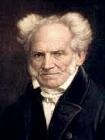
In 1866 the Parnassian School of Poetry (named after Mount Parnassus, home of the Muses) is founded in France by Alphonse Lemerre (1838-1912) in his anthology Le Parnasse contemporain (3 vols.), which is influenced by French poet Pierre Jules Theophile (Théophile) Gautier (1811-72) and German pessimist philosopher Arthur Schopenhauer (1788-1860), adopoting Gautier's motto "art for art's sake", eschewing Romanticism and its sentimentalism and social-political activism in favor of exact and faultless workmanship and emotional detachment; Reunion-born French poet Charles Marie Rene (René) Leconte de Lisle (1818-94) and Cuban-born French poet Jose-Maria (José-Maria) de Heredia (1842-1905) are the leaders.
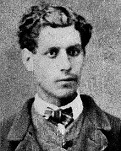
In 1868-9 Montevideo, Uruguay-born French poet Comte de Lautreamont (Lautréamont) (Isidore Lucien Ducasse) (1846-70) anon. pub. his poetic novel Les Chants de Maldoror (The Songs of Maldoror), about Maldoror, a misanthropic misotheistic evil figure who has renounced conventional morality, which later makes fans of Surrealists incl. Louis Aragon, Andre Breton, Salvador Dali, Man Ray, and Philippe Soupault; he follows with Poesies (Poésies) (1870), in which he announces "I will leave no memoirs", engaging in plagiarism of the works of famous authors incl. Blaise Pascal, Dante, Kant, La Fontaine, and La Rochefoucauld, inverting and correcting as he thinks fit.

In Sept. 1871 after receiving a train ticket from fellow poet Paul Verlaine, Charleville-Mezieres-born French Symbolist poet Arthur Rimbaud (1854-91) arrives in Paris, moving in with him and his 17-y.-o. pregnant Mathilde Maute (Mauté) and becoming his lover and fellow drug (opium, hashish, absinthe) abuser, moving to London in Sept. 1872 before falling out, after which Verlaine rejoins his wife in Brussels then returns to Paris in June 1873, begging Rimbaud to join him in the Hotel Liege in Brussels, after which on July 10 (4:00 p.m.) drunken Verlaine shoots Rimbaud in the left wrist, getting sentenced to 2 years in prison on Aug. 8; meanwhile in 1871 Rimbaud pub. his poem Le Bateau ivre (The Drunken Boat), followed in 1873 by Une Saison en Enfer (A Season in Hell), and in 1886 by his masterpiece Illuminations, after which he gives up writing to travel as a merchant, reaching three continents before dying from cancer on Nov. 10, 1891 in Marseille.

In 1876 Paris-born French Symbolist poet Stephane Mallarme (Stéphane Mallarmé) (Étienne Mallarmé) (1842-98), pub. L'Apres-Midi d'un Faune (The Afternoon of a Faun), which becomes the basis of Claude Debussy's "Prelude to the Afternoon of a Faun" (1894), becoming the greatest poem in French lit. according to Paul Valery. In 1887 he pub. Poesies (Poésies), followed by Divagations (1897) (which introduces the idea of critical poems, a mix between prose poems and critical essays), and Un coup de dés jamais n'abolira le hasard (A Throw of the Dice Will Never Abolish Chance) (1897) (which prefigures hypertext), leaving unfinished Pour un tombeau d'Anatole (For Anatole's Tomb), about his dead son.
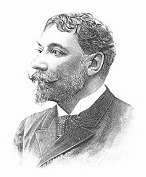
In 1878 after founding the Hydropathes Society in Paris on Oct. 11 (named after Waltz of the Hydropaths by Hungarian-German musician Joseph Gungl), Perigeux, Dordogne-born poet-novelist-journalist Emile (Émile) Goudeau (1849-1906) (known for his brown complexion, black hair and beard, and squinty face) pub. his first book of poetry Fleurs du biume (Flowers of bitumen), followed by Poemes (Poèmes) (1884), La Revanche des betes (Revenge of the Beasts) (1884), Chansons de Paris et d'ailleurs (Songs of Paris and Elsewhere) (1896), and Poemes (Poèmes) parisiens (Parisian Poems) (1897).

In 1883 Sint-Armands-born French-speaking Belgian Symbolist poet Emile (Émile) Adolphe Gustave Verhaeren (1855-1916) pub. his first poetry book Les Flamandes, inspired by artists Jacob Jordaens, David Teniers, and Jan Steen, becoming a hit among the avant-garde while pissing-off Roman Catholics; he follows with Le Moines (1886), Les Soirs (1888), Les Debacles (Débâcles) (1888), and Les Flambeaux noirs (1891), Les Heures Claires (1896), Les Heures d'Apres-midi (d'Après-midi) (1905), and Les Heures du Soir (1911), becoming world famous by the early 1900s, with his works translated into 20+ languages, being passed over for the 1911 Nobel Lit. Prize for his friend Maurice Maeterlinck and getting five more nominations before falling under a moving train in Rouen on Nov. 27, 1916.



In 1885 Honfleur-born French Symbolist poet Henri Francois Joseph de Regnier (Régnier) (1864-1936) (disciple of Stephane Mallarme) pub. his first poetry book Lendermains, followed by La Canne de jaspe, La Double maitresse, Les Vacances d'un jeune homme sage (1903), and Les Amans singuliers (1905). He marries Paris-born French poet-novelist Marie Louise Antoinette de Heredia (1875-1963), daughter of Cuban-born French poet Jose-Maria (José-Maria) de Heredia (1842-1905), who pub. under the alias Gérard d'Houville, and loves to hook up with male lovers incl. Pierre Louys, Edmond Jaloux, Jean-Louis Vaudoyer, Gabriele D'Annunzio plus maybe some lezzie lovers.

In 1894 Ghent, Belgium-born French poet-novelist Pierre Louys (Pierre Félix Louis) (1870-1925) (friend of Andre Gide and Oscar Wilde, known for his love of Greek culture) pub. Les Chansons de Bilitis (The Songs of Bilitis), lesbian poetry supposedly translated from the walls of a Greek tomb in Cyprus written by Sappho's contemporary, a courtesan; fools scholars; becomes popular with illustrators incl. Louis Icart, Willy Pogany, Georges Barbier et al.

In 1896 Reims-born French Symbolist poet Paul Fort (1872-1960) pub. his first poetry book Ballades francaises, vol. 1, creating the polyphonic prose form, reaching 17 vols. by 1958; in 1905-14 he pub. the lit. review Vers et Prose with Guillaume Apollinaire, publishing Symbolist writers incl. Paul Valery. He goes on to pub. 30+ vols. of ballads; Paul Verlaine calls him "the Prince of the Poets".
In 1900 Les Apaches (Société des Apaches) is founded in Paris by a group of French writers, artists, and musicians incl. Edouard Benedictus, Michel-Dimitri Calvocoressi, Maurice Delage, Manuel de Falla, Leon-Paul Fargue, Lucien Garban, Pierre Haour, Desire-Emile Inghelbrecht, Tristan Klingsor, Maurice Ravel, Florent Schmitt, Paul Sordes, Igor Stravinsky, Richardo, Vines, Emile Vuillermoz, and imaginary member Gomez de Riquet, named after a newspaper seller crying "Attention les apaches [hooligans]", meeting each Sat. in Sordes' or Klingsor's home, later rallying around Claude Debussy's controversial 1902 opera Pelleas et Melisande (Pelléas et Mélisande), causing him to dedicate his piano work Miroirs (Mirrors) (1904-5) to them.
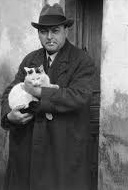
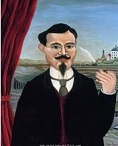
In 1905 after pub. his first poem in L'Art litterare (littéraire) in 1894, and the poem "Tancrede (Tancrède)" in Pan in 1895, Paris-born French Symbolist poet-writer Leon-Paul (Léon-Paul) Fargue (1876-1947) (known for poetry of atmosphere and detail) pub. his first poetry book Poemes (Poèmes) (1905), followed by Nocturnes (1905), Tancrede (Tancrède) (1911), Pour la musique (1912), Banalite (Banalité) (1928), Vulturne (1928), Epaisseurs (Épaisseurs) (1929), Sous la lampe (1929), Ludions (1930), D'apres (D'après) Paris (1932), and Le Pieton (Piéton) de Paris (1939), becoming a social lion in the Paris lit. scene of the 1920s-1930s, making friends with Marcel Proust, Maurice Ravel, and James Joyce.
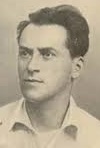
In 1905 after moving to the Latin Quarter of Paris in 1902, hooking up with Guillaume Apollinaire et al., then moving in with him, Pablo Picasso, and Max Jacob in the Bateau-Lavoir in 1904, Paris-born French Jewish poet-writer-art critic Andre (André) Salmon (1881-1969) pub. his first poetry book Poemes (Poèmes), Vers et prose, followed by Les Feeries (Féeries), Vers et prose (1907), Le Calumet (1910), Prikaz (1919), Le Livre et la Bouteille (The Book and the Bottle), (1920), L'Age de l'Humanite (L'Âge de l'Humanité) (The Age of Humanity) (1921), Ventes d'Amour (Sales of Love) (1922), Peindre (Painting) (1921), Creances (Créances) 1905–1910 (Credits) (1926), Metamorphoses (Métamorphoses) de la harpe et de la harpiste (1926), Vénus dans la balance (Venus in the Balance) (1926), Tout l'or du monde (All the Gold in the World) (1927), Carreaux et autres poemes (poèmes) 1918–1921 (1928), Saints de glace (1930), Troubles en Chine (Troubles in China) (1935), Saint Andre (André) (Sept. 24, 1936), Odeur de poesie (poésie) (Smell of Poetry) (1944), Les Etoiles (Étoiles) dans l'encrier (The Stars in the Inkwell) (1952), Vocalises (1957), Creances (Créances) 1905–1910, followed by Carreaux 1918–1921 (Credits followed by Tiles) (1968), and Carreaux et autres poemes (poèmes) (Tiles and Other Poems) (1986) (posth.). In 1964 he is awarded the grand prix for poetry by the Academie Francaise.


In 1907 Neuchatel, Switzerland-born French modernist poet-novelist Blaise Cendrars (Frederic-Louis Sauser) (1887-1961) pub. his first poetry book The Legend of Novgorode, followed by Les Paques a (Pâques à) New York (Easter in New York) (1912) (written on a visit) (influences Guillaume Apollinaire's poem "Zone"), Sequences (Séquences) (1913), and La Prose du Transsiberien (Transsibérien)( et la Petite Jehanne de France (Prose of the Trans-Siberian and of Little Jehanne of France) (1913) (art by Sonia Delaunay-Terk) ("a sad poem printed on sunlight"), after which he joins the French Foreign Legion in WWI and loses his right arm in Champagne in Sept. 1915, getting a discharge and moving to Montparnasse, Paris, becoming friends with Amedeo Modgliani, Ernest Hemingway, Henry Miller, John Dos Passos (who translates Cendrars into English). In 1916 he becomes a French citizen. He follows with Le Panama ou les aventures de mes sept oncles (Panama, or The Adventures of My Seven Uncles) (1918), J'ai tue (tué) (1918), and Dix-neuf poemes elastiques (Nineteen Elastic Poems) (1919) (revolutionary abstract short poems), becoming the first exponent of modernism in European poetry before leaving poetry for the movie industry in Italy, France, and the U.S. and concentrating on novels and short stories.
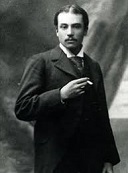
In 1908 Vichy-born French poet-writer and rich dandy Valery Larbaud (1881-1957) (owner of the Vichy Saint-Yorre mineral water springs, left to him by his father at age 8) pub. his first poetry book Poemes (Poèmes) par un riche amateur (Poems by a Rich Amateur), which makes a fan of Octave Mirbeau; he goes on to make friends with Jean Aubry, Leon-Paul Fargue, Andre Gide, and Charles-Louis Philippe, and translate and popularize Samuel Butler, Samuel Taylor Coleridge, James Joyce, and Walt Whitman before becoming paralyzed in 1935 and having to sell his property.

In 1909 Rome, Italy-born French poet-writer-art critic and erotic novelist Guillaume Apollinaire (Wilhelm Albert Wlodzimierz Apolinary Kostrowicki) (1880-1918) pub. his first book of poetry L'enchanteur pourrisant, followed in 1913 by Alcools (Alcohol), punctuation-free poems, incl. Zone, "the great poem of early Modernism" (Martin Sorrell), which establishes his rep; after he dies of the Spanish Influenza in Paris on Nov. 9, 1918, Caligrammes: Poems of Peace and War 1913-1916 is posth. pub., concrete poetry that makes use of the spatial arrangement of words on a page; a forerunner of Cubism and Surrealism, he is the coiner of the term "Cubism" (1911) to describe the works of Pablo Picasso and Georges Braque, the term "Orphism" (1912) to describe the works of Frantisek Kupka, and the term "Surrealism" (1917) to describe the works of Eric Satie.

In 1911 Point-a-Pitre, Guadeloupe-born French poet Saint-John Perse (Saint-Leger Leger) (Alexis Leger) (1887-1975) pub. his first poetry book Eloges (Éloges), becoming a French diplomat in 1914 and asst. to French PM Aristide Briand; in 1924 he pub. the extended poem Anabase, followed by Chronique (1960), Oiseaux (1963), Chant pour un equinoxe (équinoxe) (1971), Nocturne (1973), and Secheresse (Sécheresse) (1974). In 1960 he is awarded the Nobel Lit. Prize "for the soaring flight and evocative imagery of his poetry."

In 1913 Saint-Denis-born surrealist poet Paul Eluard (Éluard) (Eugène Émile Paul Grinde) (1895-1952) pub. his first poetry book Premiers poems (poèmes), followed by Repetitions (Répétitions) (cover by Max Ernst) (1922), Capitale de la douleur (Capital of Pain) (1926), L'Amour la Poesie (1929), and Liberte (Liberté) (1942), going on to join the French Communist Party in Jan. 1927 and become a fan of Stalin, stinking himself up by publicly approving the hanging of his Czech friend Zavis Kalandra in 1950.
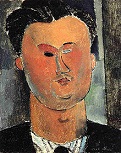
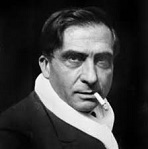
In 1915 after moving to Paris in Oct. 1910 and joining the artist community around the Bateau-Lavoir in Montmartre and making friends with Guillaume Apollinaire, Louis Aragon, Georges Braque, Andre Breton, Juan Gris, Max Jacob, Pablo Picasso, Philippe Soupault, and Tristan Tzara, pioneers of Cubism and Surrealism, Narbonne-born French poet Pierre Reverdy (1889-1960) pub. his first poetry book Poemes (Poèmes) en prose; in 1917 he founds the monthly lit. review Nord-Sud to feature his Parisian friends' work. followed by Les Epaves (Épaves) du ciel (1924), which is a hit, going beyond Cubism and Surrealism to search for "the sublime simplicity of true reality", revealing loneliness and spiritual apprehension, which attracts followers, causing Breton to call him "the great poet of the time" in his First Surrealist Manifesto, Aragon to call him "our immediate elder, the exemplary poet", and Soupault to call him "with Paul Eluard... the purest of the writers of his time"; too bad, after hooking up with perfume queen Coco Chanel in 1921, his quest leads him to convert to Roman Catholicism in 1926 and renounce the material world, moving to be near the Benedictine Abbey of St. Peter in Solesmes in NW France for life; ' "Maybe the world will not be saved./ It will not be saved. Its commerce, its/ every case also/ moves into its geology/ and then that geology moves/ into some great exit of slowing/ clocks and the history of saved light"; "Art begins when randomness ends, although randomness enriches it"; "A glass of papaya juice/and back to work. My heart is in my/pocket. It is Poems by Pierre Reverdy." (Frank O'Hara)

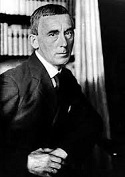
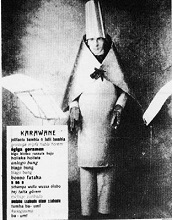

On Feb. 9, 1916 (6:00 p.m.) according to German-French artist-poet Jean (Hans) Arp (1886-1966), after it is opened by German poet Hugo Ball (1886-1927), Moinesti, Romania-born avant-garde poet Tristan Tzara (Samuel or Samy Rosenstock) (1896-1963) (AKA S. Smyro) founds the Dadaism art movement (name coined by Ball), walking into the Cabaret Voltaire in Zurich wearing a monocle, singing sentimental songs while handing paper wads to his "scandalized spectators", and leaving the stage to give room to masked actors on stilts before returning wearing clown attire; in May the first pub. with the name Dada is pub.; in 1919 he moves to Paris, joining the staff of Litterature mag., and briefly joining Surrealism founders Andre Breton and Francis Picabia before splitting with them, going on to pub. his masterpiece utopian poem The Approximate Man. "I don't want words that other people have invented. All the words are other people's inventions. I want my own stuff, my own rhythm, and vowels and consonants too, matching the rhythm and all my own." (Hugo Ball)
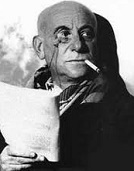
In 1917 after having a vision of Christ in 1909, causing him to convert from Judaism to Roman Catholicism, Quimper, Finistere, Brittany-born French poet-novelist-writer-painter Max Jacob (1876-1944) (AKA Leon David and Morven le Gaelique), known for the soundbyte "The truth is always new", who befriended Pablo Picasso in Paris in summer 1901, helped him learn French, and introduced him to Guillaume Apollinaire, who in turn introduced him to Georges Braqe, and became close friends with Jean Cocteau, Jean Hugo, Amedeo Modigliani, Jean Moulin AKA Romanin, and Christopher Wood) pub. the book of prose poems La cornet a des (à dés) (The Dice Box), becoming an important link between the Symbolists and Surrealists, followed by La defense (défense) de Tartuffe (1919), and Le laboratoire central (1921), settling in May 1936 in Saint-Benoit-sur-Loire, Loiret before being arrested by the Gestapo on Feb. 24, 1944, dying in Drancy Deportation Camp on Mar. 5 before they can transport him to Auschwitz, where his brother Gaston had been gassed earlier in the year.



On Mar. 19, 1919 Tinchebray-born French poet Andre (André) Breton (1896-1966), Philippe Soupault (1897-1990), and Louis Aragon (Andrieux) (1897-1982) found the periodical Litterature (Littérature) (until June 1924), launching the Surrealism movement. In 1924 Breton pub. his First Surrealist Manifesto; 2nd ed. in 1929; it defines Surrealism as "Psychic automatism in its pure state, by which one proposes to express - verbally, by means of the written word, or in any other manner - the actual functioning of thought. Dictated by the thought, in the absence of any control exercised by reason, exempt from any aesthetic or moral concern"; his stable of writers incl. Louis Aragon, Antonin Artaud, Rene Crevel, Robert Desnos, Paul Eluard, Michel Leiris, Benjamin Peret, and Philippe Soupault. In 1919 Paris-born French Surrealist poet-novelist-journalist Louis Aragon (Andrieux) (1897-1982) (son of French senator Louis Andrieux, who knocked-up his 17-y.-o. mother, who raised him with her mother, who pretended to be his sister and foster mother, claiming his father is his godfather; he is not told the truth until age 19, messing him up for life?) joins the Dadaism movement, becoming a co-founder of Surrealism in 1924 with Andre Breton and Philippe Soupault, going on to join the French Communist Party while pub. many poems, many of which are set to music, getting nominated for the Nobel Lit. Prize 4x between 1959 and 1965; in Oct. 1945 he pub. Elsa's Eyes, followed by Elsa (1959), La Fou d'Elsa (The Eyes of Elsa) (1963), and Il ne m'est Paris que d'Elsa (1965).
In the 1920s the Modernism Movement in art and lit. is centered in Paris; "Paris was where the twentieth century was" (Gertrude Stein).
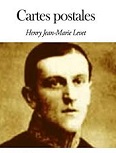
In 1921 French poet-diplomat Henry Jean-Marie Levet (1874-1906) pub. his first poetry book Poemes (Poèmes), making a fan of French poet Valery Larbaud, who writes the soundbyte: "I dreamed of a poet, a fantasist, sensitive to the diversity of race, peoples, countries, for whom everything or nothing would be exotic (it amounts to the same thing), very 'international,' a humorist, capable of doing Whitman tongue-in-cheek, giving a comic note of joyous irresponsibility, which was lacking in Whitman. At bottom, I was looking for a successor to Laforgue, Rimbaud, and Whitman. And here I seem to have found him... Henry J.-M. Levet." In 1921 he pub. Cartes Postales (Postcards), a total of 11 pages.

In 1921 after falling in love with the poetry of Guillaume Apollinaire, Reze-born French poet Benjamin Peret (Péret) (1899-1959) pub. his first poetry book Le Passager du transtlantique, switching from Dada to Surrealism and automatism while collaborating with Octavio Paz; in 1929 he emigrates with his wife Elsie Houston to Brazil, only to be expelled in 1931 for being a Communist agitator after forming the Trotskyist Brazilian Communist League; in 1940 after fighting for the Republicans in the Spanish Civil War he travels to Mexico after being refused by the U.S., settling in Mexico City with gay bud Spanish painter Remedios Varo and joining the Euro community idolizing exiled Austrian surrealist painter Wolfgang Paalen; in 1948 he returns to Paris, and dies there on Sept. 18, 1959.


In 1928 L'Isle-sur-la-Sorgue-born French poet Rene (René) Char (1907-88) pub. his first poetry book Cloches sur le coeur, going on to join the French Resistance in 1940 under the name Capt. Alexandre and become a close friend of Albert Camus, Pablo Picasso, Joan Miro, and Martin Heidegger, who calls his poetry "a tour de force into the ineffable".
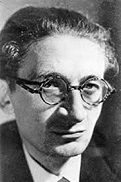
In 1933 after passing his bar exams in Paris in 1927 and beginning to attend meetings of the Sagesse (Wisdom) group that incl. Max Jacob, Pierre Mac Orlan, Pierre Reverdy, and Andre Salmon, Canisy, La Manche-born poet-writer-atty. Jean Follain (1903-71) pub. his first poetry book with Eugene Vuillevic and Pierre Albert-Birot, with his poetry fixated on his childhood in Canisy (pop. 650), going on to received the Mallarme Prize in 1939, and the Priz Blumenthal (for French poets who refuse to collaborate with the Vichy Govt.) in 1941; he goes on to pub. the poetry books Usage de temps (1943), Exister (1947), Tout instant (Oct. 11, 1957), Des heures (Apr. 29, 1960), Appareil de la terre (Apr. 15, 1964), Transparence of the World (tr. W.S. Merwin) (1969), and Espaces d'instants (Mar. 17, 1971); in 1970 he receives the grand prize for poetry from L'Academie Francaise.


In 1937 Le Havre-born poet-novelist Raymond Queneau (1903-76) (whose portrait bears a striking resemblance to Hollywood actor Rock Hudson (1925-85)?) pub. his first poetry book Chene et chien (Chêne et chien), followed by Les Ziaux (1943), L'Instant fatal (1946), Petite cosmogonie portative (1950), Cente Mille Milliards de Poemes (Poèmes) (1961), Le chien à la mandoline (1965), Battre la campagne (Beating the Bushes) (1967), Courir les rues (Pounding the Pavements) (1967), Fendre les flots (Cleave through the Waves) (1969), and Morale elementaire (élémentaire) (1975). In 1960 he founds Oulipo (Ouvroir de littérature potentielle) (Fr. "workshop of potential literature").
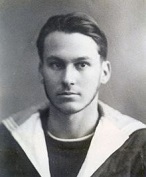
In Nov. 1939 Nabeul, Tunisia-born poet and sailor Jean Venturini (1919-40) (fan of Arthur Rimbaud) pub. his only work Outlines, after which he is killed with his entire crew in their sub Morse near Sfax, Tunisia when it strikes a mine.

In 1941 Antibes-born French poet-playwright-novelist Jacques Audiberti (1899-1965), exponent of the Theatre of the Absurd pub. his debut poetry book Des Tonnes de semence, followed by Toujours (1944), and Rempart (1953).

In 1942 during the German occupation Montpellier-born French Protestant poet Francis Jean Gaston Alfred Ponge (1899-1988) pub. his first poetry book Le parti pris des choses (The Voice of Things) (The Way Things Are), introducing his prose poem form that minutely examines everyday objects incl. cigarettes, oranges, and potatoes. In 1961-2 he pub. Le Grand Recueil (The Grand Collection) (3 vols.), which explains his "concentration on simple objects - stone, grass, directed towards a restoration of the power and purity of language." (The Times) In 1967 he pub. his masterpiece Le Savon (Soap), which The Times calls "unique precisely because, and often very humorously, it exhausts the topic of the word and the thing"; "And now, dear reader, for your intellectual toilet, here is a little piece of soap. Well handled, we guarantee it will be enough. Let us hold this magic stone."

In 1946 Tours-born French poet Yves Bonnefoy (1923-2016) pub. his first book Traite (Traité) pianiste, followed by Du mouvement det de l'immobilite (l'immobilité) Douve (On the Motion and Immobility of Douve) (1953), making him a star, going on to become "perhaps the most important French poet of the latter half of the 20th century." (Encyclopaedia Britannica)

In 1946 after his romantic poetic realist drama film Les Enfants du Paradis (1945) is a super-hit,
Neuilly-sur-Seine-born poet-screenwriter Jacques Prevert (Prévert) (1900-77)
pub. his first poetry book Paroles (Words) (his masterpiece?), talking about life in Paris during/after WWII, followed by
Spectacle (1951),
La Pluie et le beau temps (Rain and Good Weather) (1955),
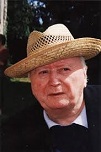
In 1953 Piscop, Morbihan, Brittany-born French poet Charles Le Quintrec (1926-2008) pub. his first poetry book Les Temps obscurs (The Dark Times), followed by Les Noces de la terre (The Marriage of the Earth) (1957), Les Chemins de Kergrist (The Paths of Kergrist) (1959, 1966), Le Dieu des chevaux (The God of Horses) (1962), La Lamp du corps (The Lamp of the Body) (1962), Le Droit au temoignage témoignage (The Right to Testimony) (1963), La Maison du Moustoir (The House of Moustoir) (1964), Alain Bosquet (1964), Le Mur d'en face (The Opposite Wall) (1965), Le Chemin noir (The Black Path) (1968), Stances du verbe Amour (Stories about the French Verb Amour) (1966), Les Grands habits (The Great Clothes) (1968), Un Buisson d'alleluias (d'alléluias) (A Bush of Hallelujahs) (1969), La Marche des arbres (The Tree Walk) (1970) (Grand Prix Internat. de Poesie), La Ville en loques (The Ragged City) (1972), Jeunesse de Dieu (Youth of God) (1974), and Le Chateau d'amour (The Castle of Love) (1977). He goes on to pub. more poetry books ending with Les Enfants de Kerfontaine (The Children of Kerfrontaine) (2007).

In 1992 Sainte-Pierre, Reunion-born French poet-novelist-filmmaker Michel Houellebecq (Thomas) (1956-) pub. his book of poetry La Poursuite du bonheur, poemes, La Difference (La Poursuite du bonheur, poèmes, La Différence), followed in 1996 by Le Sens du combat (The Art of Struggle), a homage to Charles Baudelaire, in 1999 by Renaissance, and in 2013 by Configuration du dernier rivage.